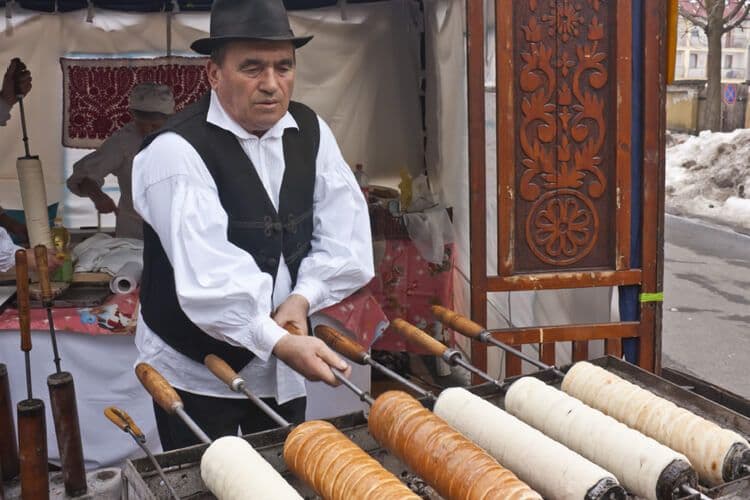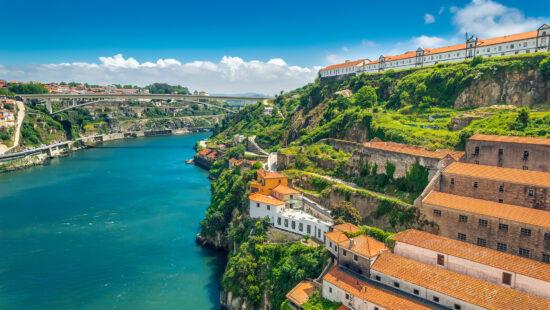No words can truly describe the deliciousness of most dishes, be it their flavours on the tongue, their aromas or their texture. Travelling for food is one of the greatest pleasures known to mankind. Near the top of the list of sweet treats are affordable and easy to find pastries. Through sometimes made with simple ingredients – flour, water, butter, eggs – pastries become the most representative item of a given country. To get to know the best countries of Europe intimately, savour these famous pastries.
1. The Kipferl: the Original, Rugged Croissant – Austria
The kipferl is without a doubt the ancestor of the French croissant. The first iterations of it can be dated to the 13th century, but its crescent shape came about in Vienna in the 17th century.
History tells that in 1683 during the Siege of Vienna, while the bakers were busy at their task in the middle of the night, they heard noises in the depths of the city – the Ottoman Turks were digging tunnels to breach the bunkered city. They were able to warn their leaders and prevent a surprise underground attack, thus saving the city. The croissant was invented by those very same bakers after the victory of the Holy League over the Turks. They made the pastry in the shape of the crescents (“Kipferl”, in German) on the flags of their defeated enemy.
The French leg of the kipferl’s journey to becoming a croissant shall be left for another day. Something to do with Austrian princesses and soon-to-be decapitated kings, so we won’t cut your appetite. Enjoy one (or four) of these delicacies in one of Vienna’s legendary cafés, accompanied by a hot cup of Viennese chocolate or coffee. They are a popular treat for Journeys by Van Dyke guests crusing from Bucharest to Vienna.

2. The Divine Pastel de Nata – Portugal
Called pastel de nata in its native country, one brand name gave its name abroad – Pastel de Belém. The dessert consists of a light filo pastry formed into a cup shape, in order to receive a delicious, vanilla-infused custard cream. When baked, the custard thickens and scorches on top, much like a crème brûlée. Essentially, it’s like two desserts in one, and this combination of soft, sweet cream and flaky pastry is absolutely heaven. This may have something to do with location of the original home of the pastel de nata: right next to a monastery. Consider your spiritual-culinary experience complete after visiting both places on our tour of Lisbon.
Place to eat: the home of this pastry is considered Pastéis de Belém, in the Belem district west of Lisbon. If that’s too far to go, no need to fret, very good pastéis de nata are sold in most cafés and restaurants in Lisbon as well.

3. The Twirly Kürtóskalács Chimney Pastry –Hungary
This one is another favourite among our guests cruising from Bucharest to Vienna. The kürtőskalács is a coiled spitcake originally made for celebrations, but now widely consumed. Its origins are traced back to a Hungarian-speaking region in Romania, the Székely Land. The dough gets kneaded thoroughly and stretched to roughly 1 centimetre in thickness, then coiled around a piece of wood, giving it its distinctive chimney or vent shape in baking. A thin layer of oil or egg is doused on the surface, which will help with the sugar layer. The recipe has undergone significant changes throughout the centuries. Initially, the Székely people baked this dessert over the hot embers left over from baking bread, which today is only allowed at outdoor events such as fairs or concerts. Later in its history, toppings were added after baking, owing to the fact that the sticky surface of the kürtóskalács was perfect for chopped walnuts, cinnamon or poppy seeds. Today, other popular flavours include vanilla, almonds, coconut, and of course, chocolate. Just take your pick! While ambling through the streets of Budapest, let yourself be guided by that most under-used of senses – the sense of smell. So half-close your eyes (you’ll be walking) and follow the sweet caramel and vanilla aromas wafting down the narrow alleyways: at their source will undoubtedly be a Kürtóskalács bakery.





